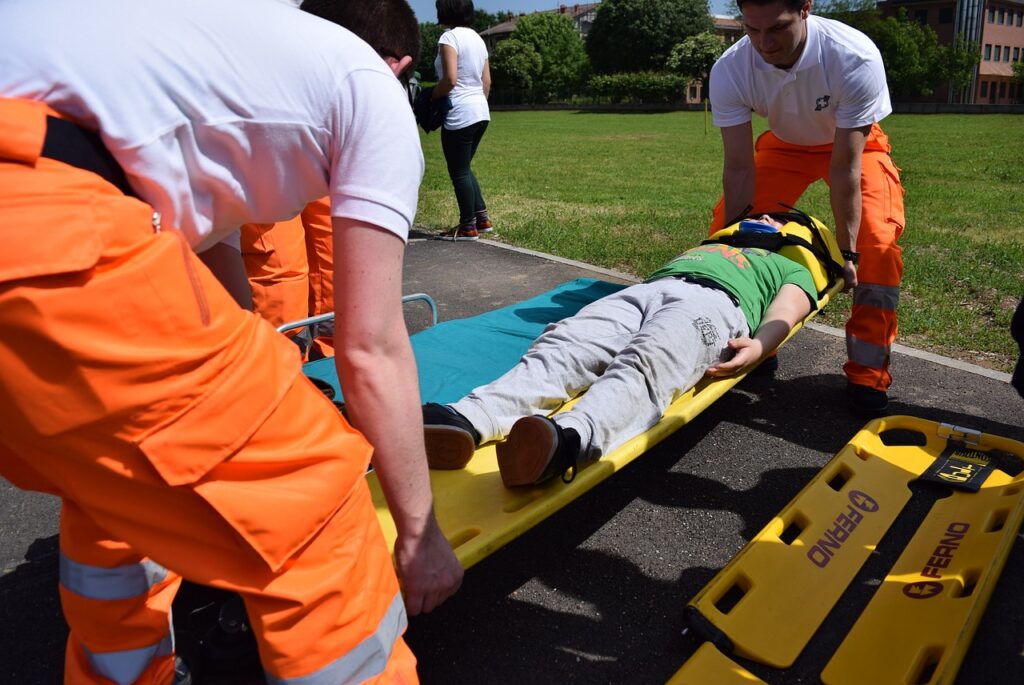As an employer or employee, it’s crucial to understand the risks associated with blood borne pathogens and the importance of taking preventative measures to protect yourself and your workplace. Blood borne pathogens are microorganisms that can be found in human blood and other bodily fluids, and they pose a significant health hazard if not handled properly. Fortunately, the Occupational Safety and Health Administration (OSHA) has established guidelines for blood borne pathogens training to ensure employee safety and reduce the risk of exposure. In this article, we’ll explore the importance of OSHA blood borne pathogens training, the risks associated with exposure, and the preventative measures you can take to keep yourself and your workplace safe. Whether you work in healthcare, public safety, or any other industry that requires potential exposure to blood or bodily fluids, this information is vital to your health and the health of others around you.
OSHA Regulations for BBP Training
OSHA has established regulations for blood borne pathogens training that employers and employees must follow. OSHA requires that employees who have the potential for occupational exposure to blood or other potentially infectious materials (OPIM) receive initial and annual training. The training must be provided at no cost to the employee and during work hours. The training must cover the following topics:
– Explanation of blood borne pathogens
– Modes of transmission of blood borne pathogens
– Exposure control plan
– Use of personal protective equipment (PPE)
– Hepatitis B vaccine
– Actions to take in an emergency involving blood or OPIM
The employer must also maintain a training record for three years from the date of the training. The record must include the date of training, the content that was covered, and the name and qualifications of the person who conducted the training.
OSHA also requires that employers provide the necessary PPE to employees who may be exposed to blood or OPIM. The employer must ensure that the PPE is readily accessible and available in appropriate sizes.
Understanding BBP Exposure
Blood borne pathogens are microorganisms that are present in human blood and other bodily fluids such as semen, vaginal secretions, and cerebrospinal fluids. The most significant risk of exposure to blood borne pathogens is through contact with infected blood. This can occur through needle sticks, cuts, or other types of skin punctures. Exposure can also occur through contact with mucous membranes, such as the eyes, nose, and mouth.
Exposure to blood borne pathogens can result in serious health consequences, such as:
– Hepatitis B, C, and D
– Human immunodeficiency virus (HIV)
– Syphilis
– Malaria
– Brucellosis
The symptoms of these diseases can be mild to severe, and in some cases, they can be fatal. It’s important to take preventative measures to reduce the risk of exposure to blood borne pathogens.
Common BBPs and How They Spread
There are several blood borne pathogens that employees may be exposed to, including:
– Hepatitis B virus (HBV)
– Hepatitis C virus (HCV)
– Human immunodeficiency virus (HIV)
Hepatitis B is a virus that can cause liver disease. It is spread through contact with infected blood, semen, or other bodily fluids. Hepatitis C is a virus that can cause liver disease. It is spread through contact with infected blood. HIV is a virus that attacks the immune system. It is spread through contact with infected blood, semen, vaginal secretions, or breast milk.
The most common way that blood borne pathogens are spread is through needle sticks or other types of skin punctures. Employees who work with needles, such as healthcare workers, are at high risk for exposure. Other ways that blood borne pathogens can be spread include contact with mucous membranes, such as the eyes, nose, and mouth, or contact with broken skin.
The Importance of Personal Protective Equipment (PPE)
Personal protective equipment (PPE) is clothing or equipment that is worn to protect individuals from exposure to blood borne pathogens. Examples of PPE include gloves, gowns, face shields, and respirators. PPE is essential in preventing the spread of blood borne pathogens.
The type of PPE required depends on the level of exposure to blood or OPIM. Employers must provide the necessary PPE to employees and ensure that the PPE is readily accessible and available in appropriate sizes. Employees must also be trained on how to properly use and dispose of PPE.
It’s important to note that PPE is not a substitute for safe work practices. Employees must still take preventative measures to reduce the risk of exposure to blood borne pathogens, such as proper hand hygiene and safe handling and disposal of needles.
Steps for Proper Decontamination
Proper decontamination is essential in preventing the spread of blood borne pathogens. If an employee is exposed to blood or OPIM, they must take the following steps for proper decontamination:
1. Stop the bleeding, if necessary.
2. Wash the exposed area with soap and water for at least 15 seconds.
3. Use an antiseptic, such as hydrogen peroxide or alcohol, to disinfect the area.
4. Report the exposure to the supervisor or designated person.
5. Seek medical attention immediately.
If the exposure occurs on the eyes, nose, or mouth, flush the area with water for at least 15 minutes. Seek medical attention immediately.
Emergency Response for BBP Exposure
Employees must be trained on the proper emergency response procedures in the event of exposure to blood or OPIM. The following steps should be taken in an emergency:
1. Call 911 or the designated emergency number.
2. Administer first aid, if necessary.
3. Handle the contaminated material with caution.
4. Report the incident to the supervisor or designated person.
5. Seek medical attention immediately.
It’s important to note that employees should not attempt to clean up blood or OPIM unless they have been trained in proper cleanup procedures.
BBP Training Requirements for Employers and Employees
Employers are responsible for providing initial and annual training to employees who have the potential for occupational exposure to blood or OPIM. The training must be provided at no cost to the employee and during work hours. Employers must also provide the necessary PPE to employees who may be exposed to blood or OPIM.
Employees must attend the initial and annual training provided by the employer. Employees must also follow safe work practices, use PPE as required, and report any exposures to the supervisor or designated person.
BBP Training Resources
There are several resources available for employers and employees to receive blood borne pathogens training. OSHA provides online training courses and resources for employers and employees. The American Red Cross also provides blood borne pathogens training courses.
Employers should also consult with their state OSHA agency to ensure that they are meeting the state-specific requirements for blood borne pathogens training.
Conclusion
Blood borne pathogens pose a significant health hazard if not handled properly. Employers and employees must take preventative measures to protect themselves and their workplace from exposure. OSHA has established regulations for blood borne pathogens training to ensure employee safety and reduce the risk of exposure. Employers must provide initial and annual training to employees who have the potential for occupational exposure to blood or OPIM. Employees must attend the training provided by the employer, follow safe work practices, use PPE as required, and report any exposures to the supervisor or designated person. With proper training and preventative measures, employers and employees can work together to reduce the risk of exposure to blood borne pathogens.


